A “lines and pairs” article will show the strengths and weaknesses of teams by comparing the Productivity Rating (PR) of their forward lines and defensive pairs to the league average. Some teams are strong up front, some teams have good third and fourth lines, and Chicago falls into neither of those categories.
The data in these charts were collected at approximately the mid-point of the 2022-23 season.
How Lines and Pairs are Identified
No forward line or defensive pair play together for the entire season, what with injuries and losing streaks. Players have been assigned to lines and pairs based on their statistics. As an example, the top three forwards for every team in terms of PR were declared their first line (F1), and the next three best forwards were declared their second line (F2).
Pairs and lines had their average PR calculated at the team level and at the league level. Team charts show how each team’s lines and pairs compare to the league average.
Atlantic Division – Line and Pair Total PR
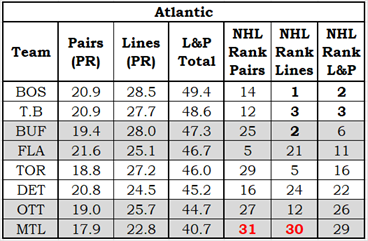
The Division Table shows each team’s total for Pairs, Lines and team (L&P Total). It also shows where the teams ranked in each category in the league. For example, the Toronto Maple Leafs ranked 29th in defensive pairs, 5th in forward lines and 16th overall.
In the rank columns, a team in the top three in the league will be in bold black font, while a team in the bottom three will be in bold red font.
Line and Pair Charts
I will use the Boston Bruins to explain the chart.
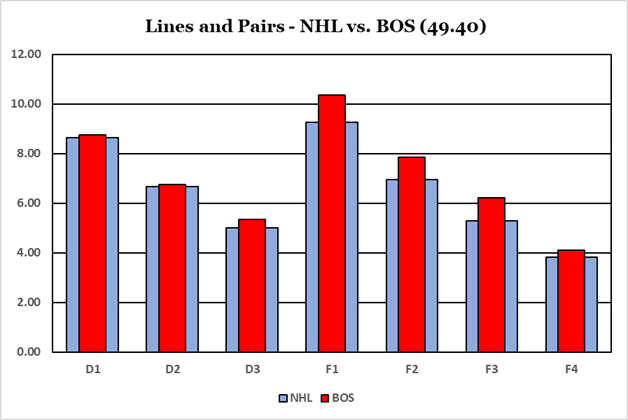
The league average ratings are the wide blue columns, while a team’s ratings are shown in narrow red columns. Defense pairs are shown first and forward lines follow. The chart title shows the team’s total line and pair rating: 49.40 for Boston (2nd in the league).
Boston’s four lines and three pairs are all above average. If Charlie McAvoy stays healthy for the rest of the year, Boston’s D1 rating will surely improve.
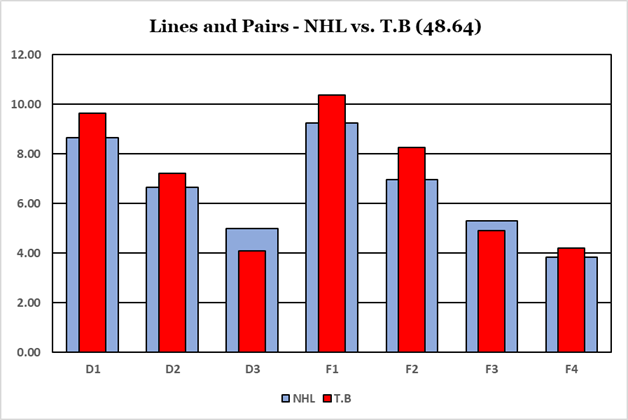
Their top two pairs and top two lines are really good. Things drop off precipitously thereafter.
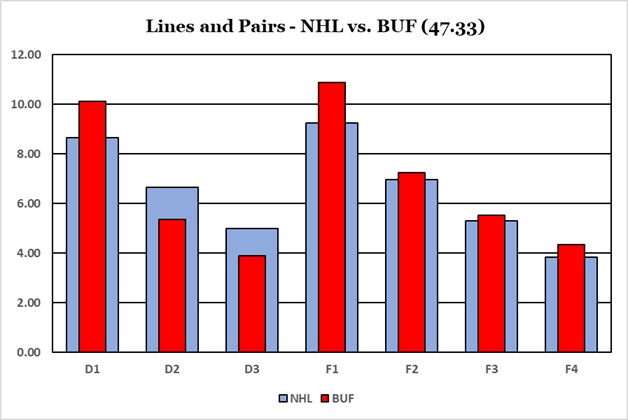
Buffalo has great forwards, with all four lines above average (F1 impressively so). Their defence starts off strong, but quickly fades: it is perilously thin. They need at least two more good defensemen who would be a strong second pair, making their current second pair a good third pair.
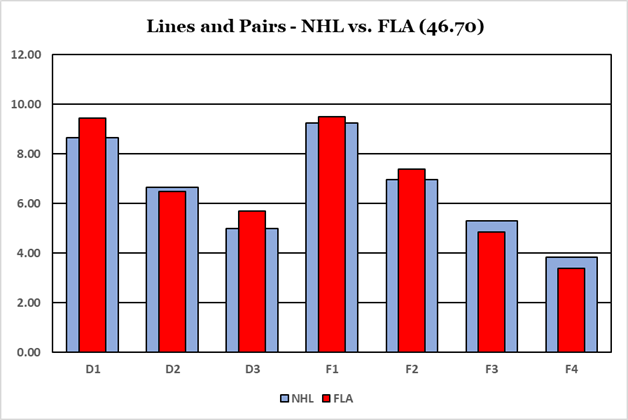
The Florida Panthers have good defensemen and two good lines. They are a little weak at D2, F3 and F4: it is hard to make the playoffs with eight below-average players.
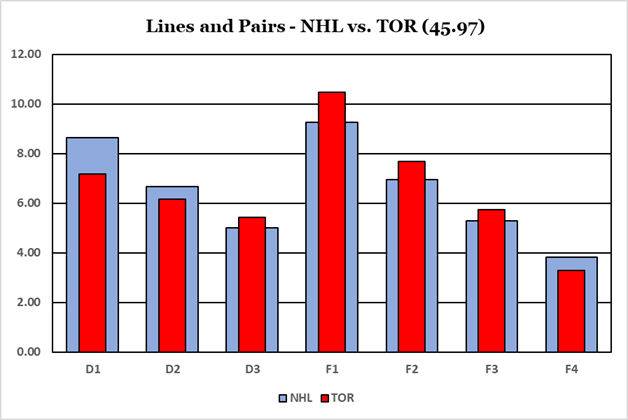
While it shouldn’t come as a surprise that Toronto’s defense has a below average rating, the depth of that rating might shock. The low pair rating is more related to the fact that their defensemen do not score, rather than that they do not stop the opposition.

The Red Wings: strong on defense, weak on offense. A better than average fourth line is both nothing to sneeze at and nothing to brag about.
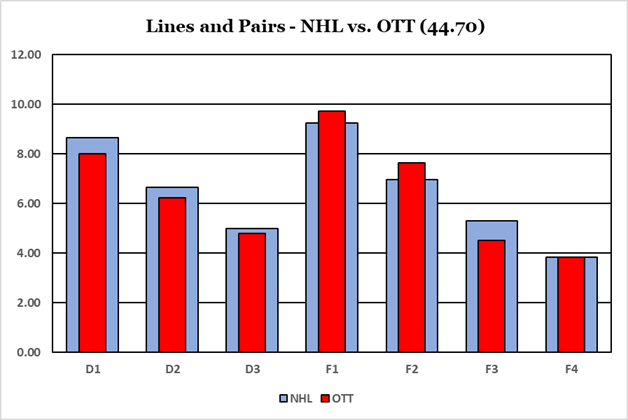
Ottawa’s chart is not much of a surprise (if you follow the Senators closely). They have two good forward lines and have been plagued by injuries both to the forwards and the defensemen. Their present F3 would make a good F4.
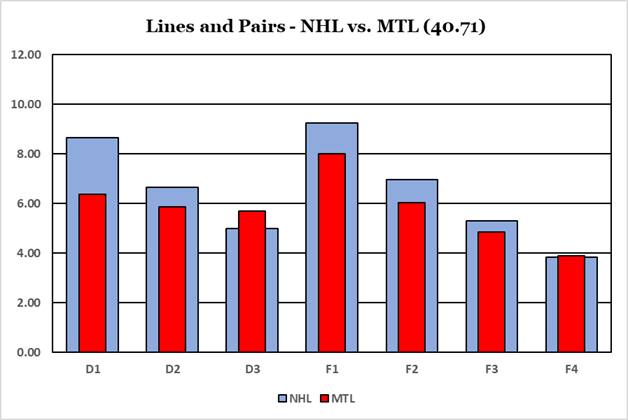
Montreal’s D1 (Kaiden Guhle, Jordan Harris) are slightly higher rated than Seattle’s D3 (Will Borgen, Carson Soucy).
Summary
The L&P ratings don’t perfectly match the standings. For one, while Toronto ranks behind Florida in the L&P, they are comfortably ahead of Florida where it counts (in the standings, in case that was not obvious).
